濕度界面
Rain Bound
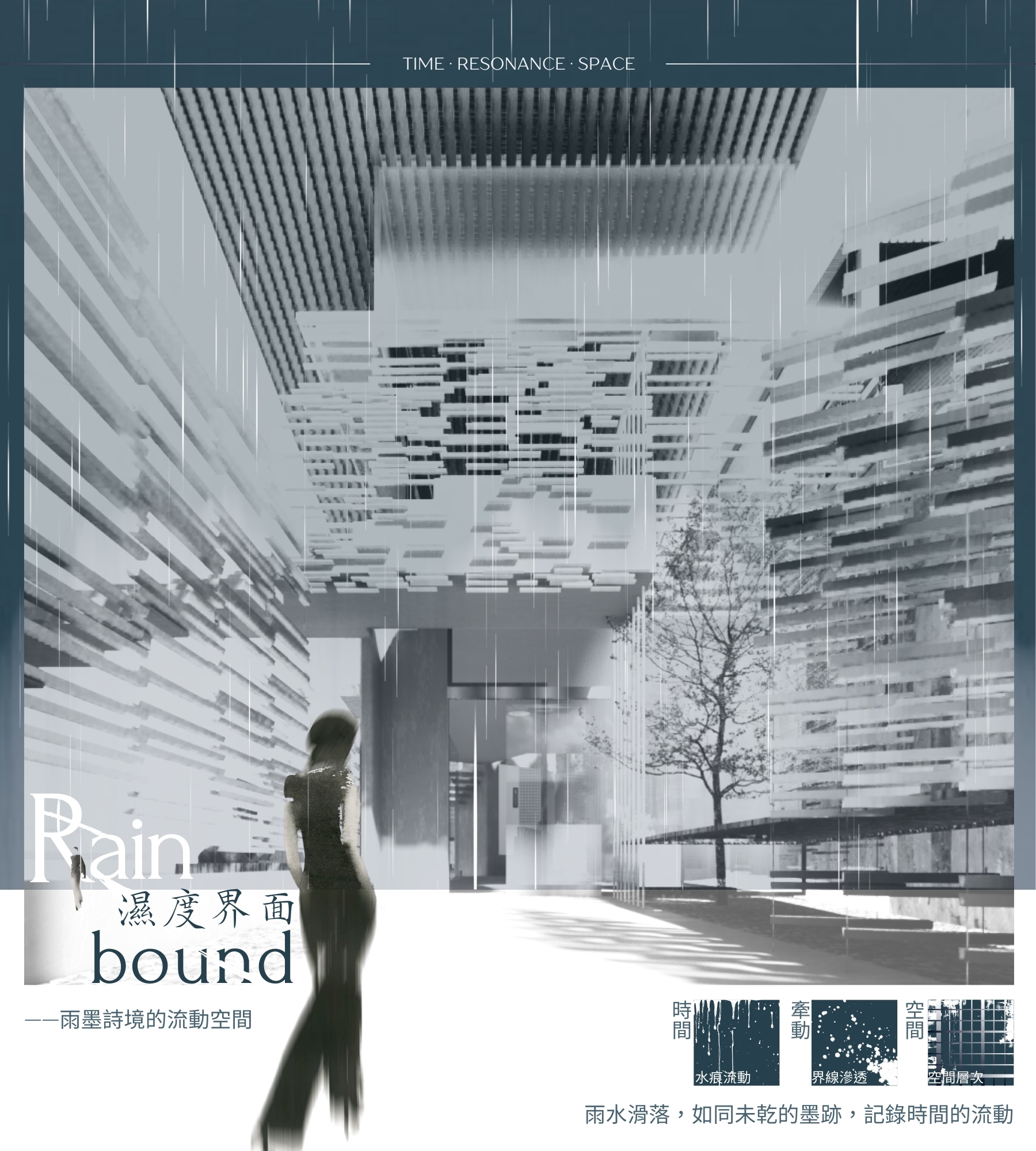
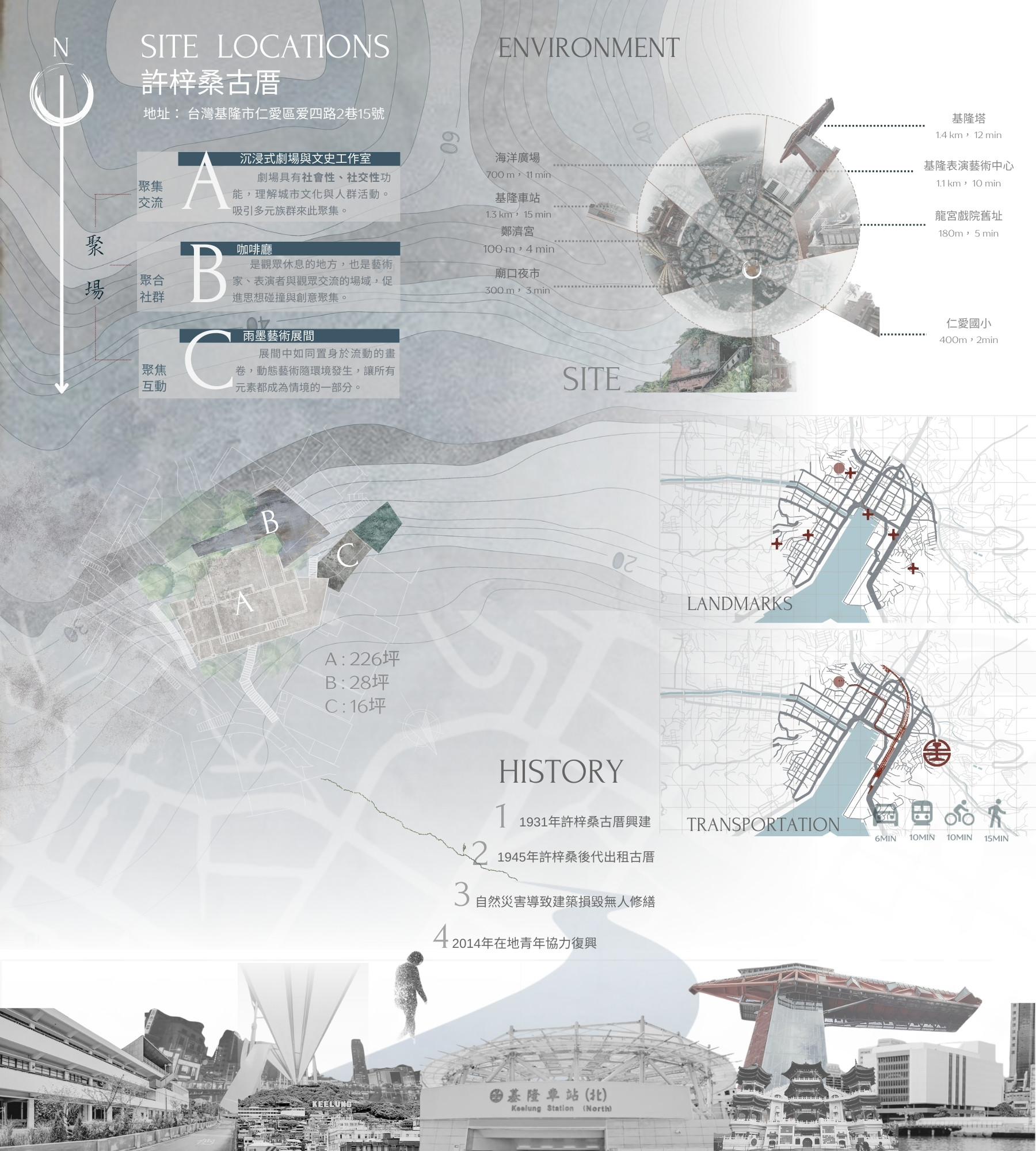
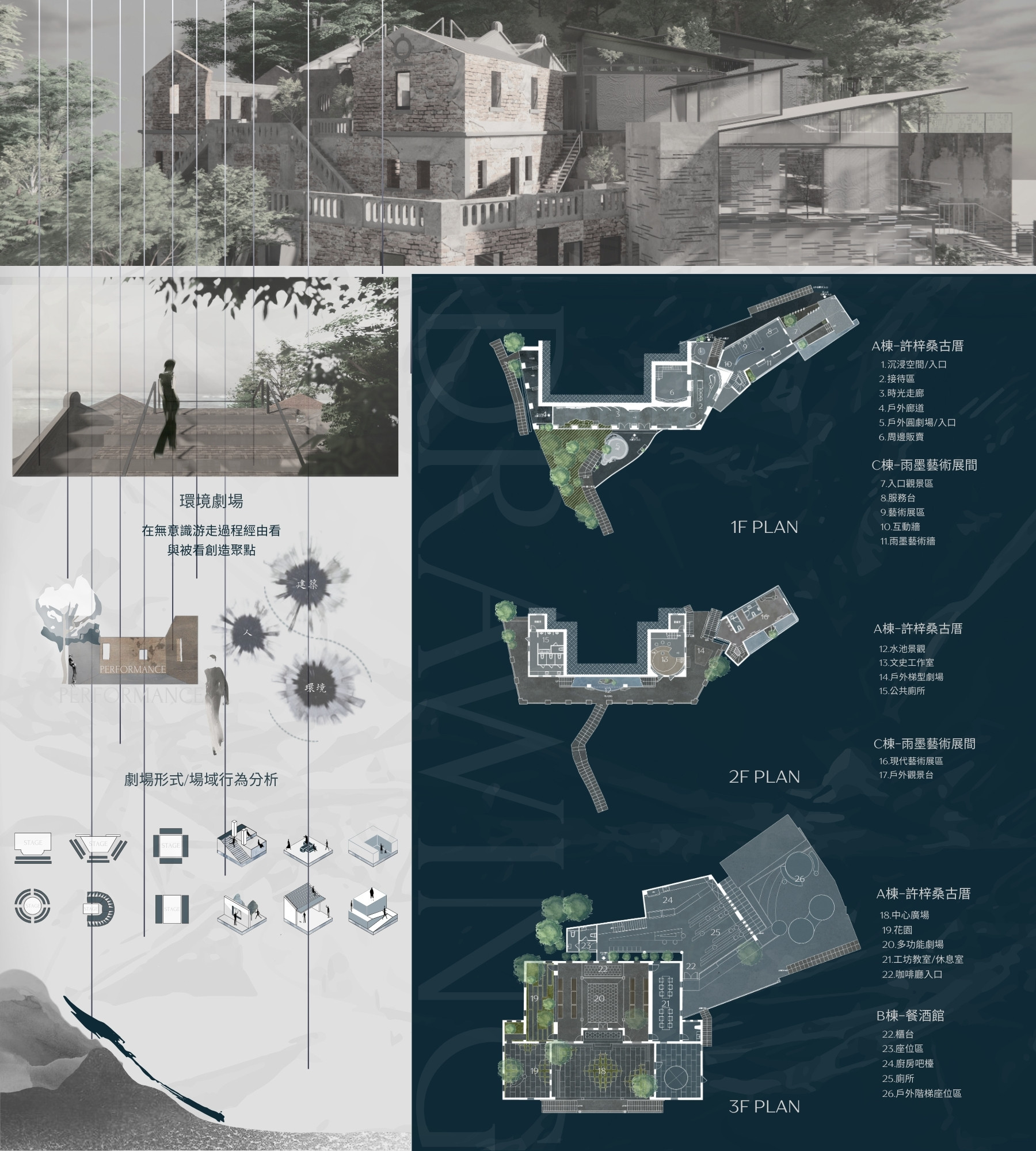
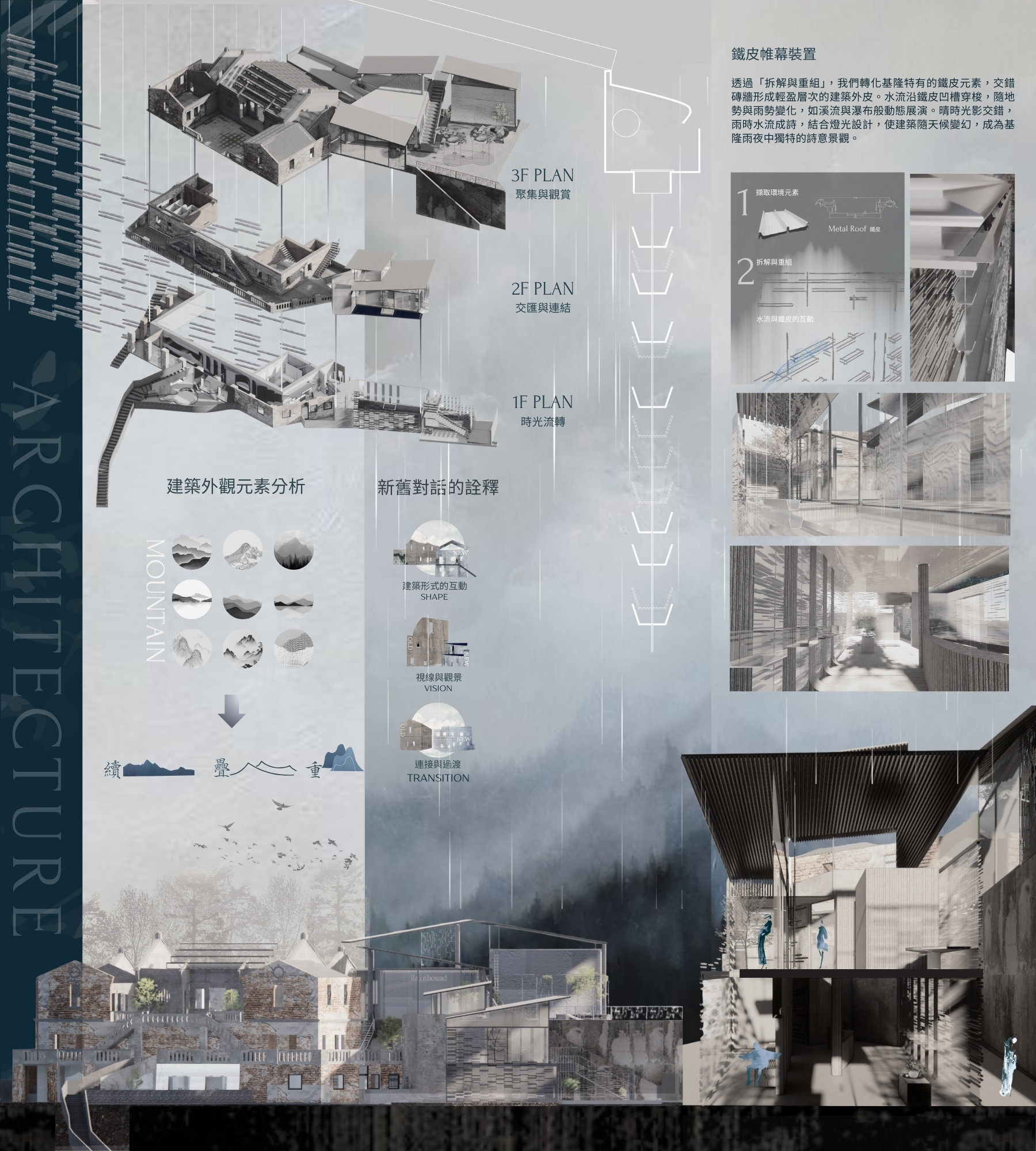
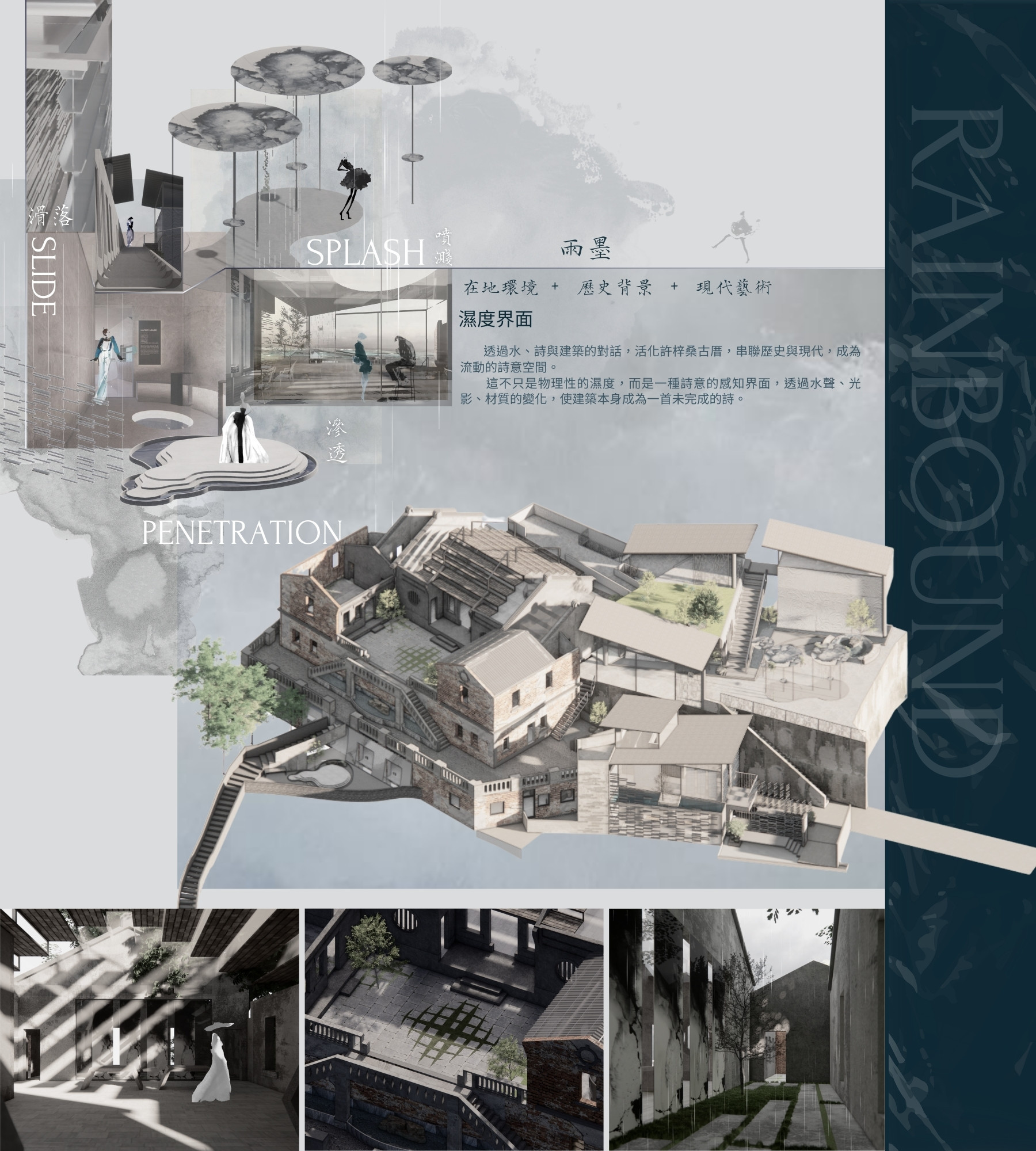
許梓桑古厝的復興,並非單純的修復,我們以「濕度界面」為概念,讓水、詩與歷史建築交融,使歷史與當代重新交織,形成流動的詩意場域。
透過拆解與重組,我們重新詮釋特有的鐵皮建築語彙,使其與磚牆交錯組合,呈現層次感與輕盈感,並與當地潮濕多雨的環境共鳴。水流沿著鐵皮凹槽與地勢變化,形成如山間溪流或斷點式落水的動態效果,使建築在視覺與聽覺層面皆能回應環境。晴天時,光影交錯映照建築表面;雨天時,水流沿著建築脈絡流動,轉化為動態的水墨詩篇,結合夜間燈光設計,營造基隆雨夜獨特的詩意氛圍。
來訪者的足跡與環境互動,深化這種沉浸式體驗。在這裡,濕度不僅是物理性的存在,更是一種詩意的感知界面。透過水聲、光影、材質手法的變化,在環境的雨與歷史的墨之間,用雨墨讓建築本身成為一首未完成的詩。
Rain Bound
The revival of Xu Zisang Historic House is not merely a restoration; it is a reimagining through the concept of the " Rain Bound ," where water, poetry, and historical architecture intertwine, weaving history and the present into a fluid, poetic space.
Through deconstruction and reassembly, we reinterpret the unique tin-clad architectural language, interweaving it with brick walls to create a sense of layering and lightness, resonating with the region’s humid and rainy climate. Water flows along the grooves of the tin panels and the natural terrain, forming dynamic effects reminiscent of mountain streams or cascading waterfalls, allowing the architecture to respond to its environment both visually and acoustically. On sunny days, light and shadow dance across the building’s surface; on rainy days, water traces its architectural contours, transforming into a living ink painting. At night, integrated lighting enhances the poetic ambiance of Keelung’s rain-filled evenings.
Visitors' footsteps and their interaction with the surroundings deepen this immersive experience. Here, humidity is not just a physical presence but a poetic sensory interface. Through the interplay of water, sound, light, and materials, rain and ink merge, turning the architecture itself into an unfinished poem.
樹德科大室內設計系
(四年級)
俞品彤
樹德科大室內設計系
(四年級) 指導老師 郭美紅